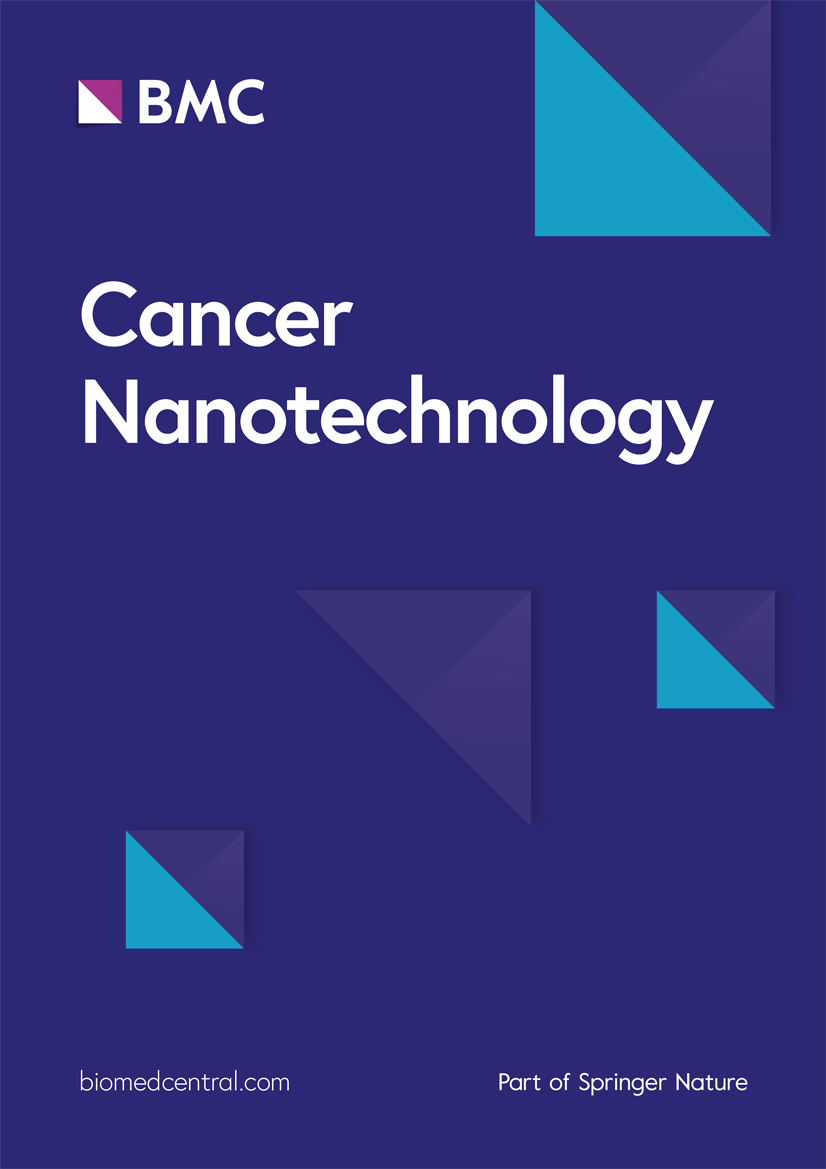Induction of ferroptosis by artesunate nanoparticles is an effective therapeutic strategy for hepatocellular carcinoma
IF 4.8
2区 工程技术
Q2 NANOSCIENCE & NANOTECHNOLOGY
引用次数: 0
Abstract
Abstract Artesunate (ART) has great value in the field of tumor therapy. Interestingly, in this study, we found that ART could obviously induce ferroptosis in hepatocellular carcinoma (HCC) cells, but its low water solubility and bioavailability limited its application potential. Hence, we synthesized ART-loaded mesoporous silica nanoparticles (MSNs) conjugated with folic acid (FA) (MSN-ART-FA) with tumor-targeting performance and assessed their characteristics. We evaluated the ability of MSN-ART and MSN-ART-FA to induce ferroptosis of hepatoma cells via testing levels of reactive oxygen species (ROS), Fe 2+ , malondialdehyde (MDA) and glutathione (GSH), observation of mitochondrial morphology, as well as the expression of key proteins in ferroptosis. The results showed that prepared MSN-ART and MSN-ART-FA could remarkedly improve the bioavailability of ART to enhance ferroptosis, thereby inhibiting cell proliferation, migration and invasion in vitro. Besides, MSN-ART-FA group displayed slower tumor growth and smaller tumor volumes than MSN-ART group in HepG2 xenograft mouse model. It provided a potential therapeutic option for HCC and expanded the horizon for the clinical treatment of other cancers. Graphical Abstract青蒿琥酯纳米颗粒诱导铁下垂是一种有效的肝癌治疗策略
青蒿琥酯(ART)在肿瘤治疗领域具有重要的应用价值。有趣的是,在本研究中,我们发现ART能明显诱导肝癌细胞铁下垂,但其低水溶性和生物利用度限制了其应用潜力。因此,我们合成了具有肿瘤靶向性能的载art偶联叶酸(FA)的介孔二氧化硅纳米颗粒(MSNs - art -FA),并评估了它们的特性。我们通过检测活性氧(ROS)、Fe 2+、丙二醛(MDA)和谷胱甘肽(GSH)水平、观察线粒体形态以及铁下垂关键蛋白的表达来评估MSN-ART和MSN-ART- fa诱导肝癌细胞铁下垂的能力。结果表明,制备的MSN-ART和MSN-ART- fa可显著提高ART的生物利用度,增强铁下垂,从而抑制细胞的体外增殖、迁移和侵袭。此外,在HepG2异种移植小鼠模型中,MSN-ART- fa组肿瘤生长速度较MSN-ART组慢,肿瘤体积较小。它为肝癌提供了一种潜在的治疗选择,并扩大了其他癌症的临床治疗范围。图形抽象
本文章由计算机程序翻译,如有差异,请以英文原文为准。
求助全文
约1分钟内获得全文
求助全文
来源期刊

Cancer Nanotechnology
Pharmacology, Toxicology and Pharmaceutics-Pharmaceutical Science
CiteScore
5.20
自引率
1.80%
发文量
37
审稿时长
15 weeks
期刊介绍:
Aim:
Recognizing cancer as a group of diseases caused by nanostructural problems (i.e. with DNA) and also that there are unique benefits to approaches inherently involving nanoscale structures and processes to treat the disease, the journal Cancer Nanotechnology aims to disseminate cutting edge research; to promote emerging trends in the use of nanostructures and the induction of nanoscale processes for the prevention, diagnosis, treatment of cancer; and to cover related ancillary areas.
Scope:
Articles describing original research in the use of nanostructures and the induction of nanoscale processes for the prevention, diagnosis and treatment of cancer (open submission process). Review, editorial and tutorial articles picking up on subthemes of emerging importance where nanostructures and the induction of nanoscale processes are used for the prevention, diagnosis and treatment of cancer.
 求助内容:
求助内容: 应助结果提醒方式:
应助结果提醒方式:


